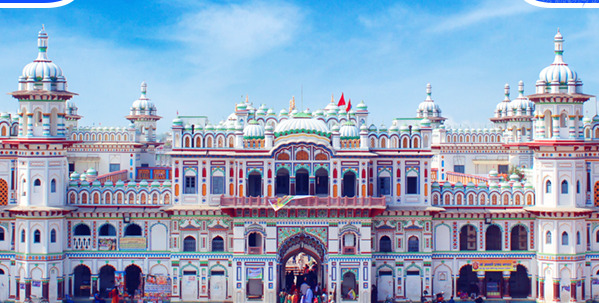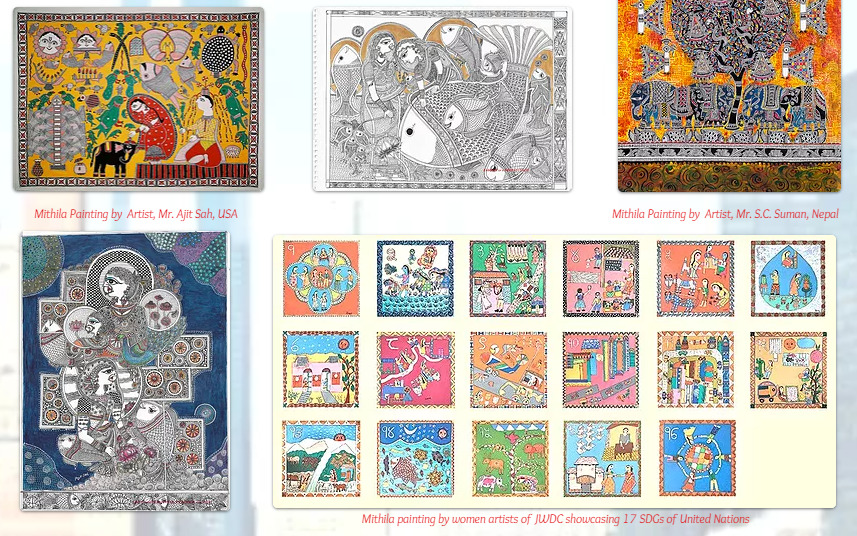
The ancient kingdom of Mithila flourished from the ninth century B.C. to the third century A.D. on a broad plain bounded by Himalayas and the river Ganga in what is now eastern Nepal and the northeastern part of India. The capital of ancient Mithila,
Janakpurdham is well known by the epic of the Ramayan, which influenced cultures throughout Southeast Asia. Mithila culture underlines equality, liberty, justice, peace and progress of human beings.
Mithila Art has been known to exist for centuries and they are drawn by the female members of the household. Here, women have passed the art and tradition of wall painting from mother to daughter for three millennia. Mithila Art traditionally narrates mythological and religious events, and also, they are used for decoration as well as documenting the social commentary. More recently, Mithila painting have taken up as a more contemporary and collectable art form, with men/women artists painting on canvases of rough handmade paper that is similar in texture to the mud hut walls. Not only are Mithila paintings now exhibited in galleries across the world, but more importantly the art has also opened up a new industry for women in impoverished rural communities.

